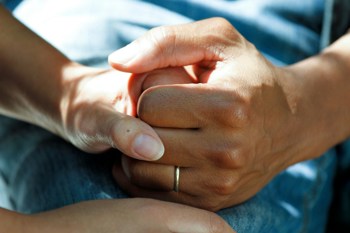State-of-the-art technology helping to prevent and reduce the risk of falls in hospital
Friday, 15 March 2024

Falls prevention at the Countess of Chester Hospital
A £240,000 investment into assistive technology at the Countess of Chester Hospital NHS Foundation Trust is helping to prevent and reduce the risk of patient falls.
Falls are one of the most commonly reported types of patient safety incidents in the NHS and their impact can be devastating for patients, often resulting in serious physical injury, reduced independence and mobility, and leading to a longer hospital stay.
This is why reducing falls has been identified as one of the Trust’s top priorities, and is one of seven improvement programmes that are currently underway across its hospital sites.
As part of this, the Trust has allocated the sum for the purchase and maintenance of assistive technology equipment known as Rambleguards, a state-of-the-art solution that helps to detect patient movement.
The wireless and cordless system uses sensors to detect when a patient is moving from their bed, chair or toilet, meaning that nurses can respond more quickly to provide support to patients when it is required.
It essentially enables them to have ears on a patient on their ward, even when they haven’t got eyes on them, and importantly, this equipment is patient-friendly and does not impact on a patient's privacy or dignity in any way.
Following a successful trial on the Bluebell Ward at Ellesmere Port Hospital and other selected wards at the Countess of Chester Hospital, the Trust is now expanding the initiative across all of its adult wards, as well as for use in the A&E Department and Same Day Emergency Care (SDEC) Centre.
Installation of this equipment across the Trust is already underway, and upon admission, if a patient is identified as being frail elderly or at risk of having a fall, the nursing team will have a personalised care discussion with the patient and their family or loved ones so that additional measures including the use of this assistive technology can be put in place quickly to reduce the chance of them having a fall during their stay.
A commitment to improving patient safety is the key driving factor in this investment into assistive technology and it has already proven extremely effective in preventing falls, and providing greater reassurance to patients and families already.